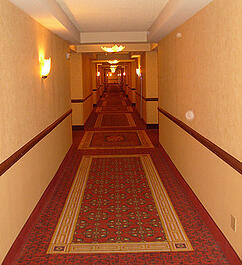
If anyone has told you there are "Tiers" in optical transceiver quality, you've been misinformed.
Optical transceivers are real workhorses in the world of modern business networks. These small plug-in devices are used in most brands of switches and controllers - most notably Cisco - and allow them to accept a far wider range of cable and fiber types than the switch could ever natively support.
If your switch has an SFP (Small-Form Pluggable) port, then it can be swapped out at will whenever you have a need for a new type of fiber run or distance. These ports are usually also plug-and-play, so that rebooting isn't necessary.
Sadly, some manufacturers want to nickle-and-dime you for their own matching brand of SFP transceivers, to the tune of hundreds of dollars, when realistically the components cost roughly 1/10th their list prices. To convince people to buy from them, rather than third-parties, they then engage in the age-old art of FUD: Fear, Uncertainty, and Doubt.
Companies like Cisco would desperately like you to believe that third-party transceivers are dangerous, or low quality, but it's simply not the case.
Why There Are No Tiers In Optical Transceivers
Titles like "Tier 1" or "Tier 2" transceivers are pure market-speak. These aren't defined standards, and they exist only in promotional brochures. Some brands -again, Cisco- will even go so far as to threaten a revocation of your warranty if non-Cisco brands are used.
That might be an understandable position if their marketing was accurate. But it's not.
In reality, virtually all transceivers -whether first-party or third-party- are made from similar stock components! There are only a handful of qualified manufacturers of laser \ fiber optic technology in the world, and they supply all the raw components for all the transceivers on the market.
Most third-party compatible optics are literally built and assembled in the exact same plants as first-party equipment. Often, they're even built to the exact same specs, and the only difference is the branding on the label.
Well, that and a few hundred dollars.
If you're buying your transceivers from a reputable source, there's simply no good reason to fear them somehow causing harm, any more than you should worry about putting third-party spark plugs in your car. It's a simple, standardized, reliable technology no matter who the manufacturer is.
Finding Reliable Third Party Optical Transceivers
If you're shopping for low-cost compatible SFP, here's all you need to look for:
1 - A Lifetime Warranty
These are basic pieces of equipment that, when properly made, will give years of service. Your vendor should be willing to fully back them by warranty, with replacements, especially since they're so inexpensive to produce.
2 - Low Failure Rates
Ask your vendor about the failure rate on their transceivers. You'll want to get a number that's well under 1%, and ultimately lower than most hardware failure rates.
3 - Proper Consultation
Often, the biggest challenge to buying SFPs is identifying the right ones to meet your needs. Cisco even maintains a compatibility matrix to help explain which transceivers are compatible with their different hardware. If you're buying SFPs, your vendor should be making sure you're buying the right ones.
Don't Get Tricked By Fake Tiers!
There's simply no such thing as "Tier 1" optics. It's the same technology, usually built in the exact same plants, no matter what brand is on the outside case. As long as you pick a reliable vendor, third-party transceivers will work just as well as first-party.
Want more tips? Please don't hesitate to contact Hummingbird Networks for more cost-saving advice!
Get a free trial of Hummingbird Networks Optical Transceivers to test in your own network!
photo credit: Jill Clardy via photopin cc
photo credit: claymore2211 via photopin cc











